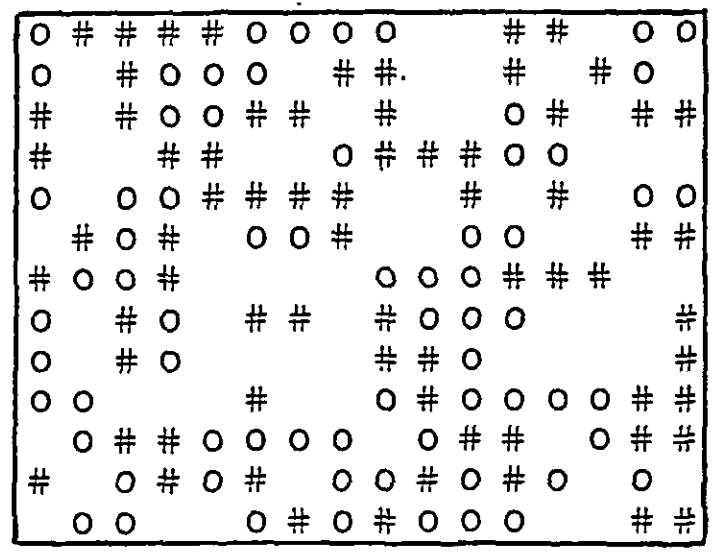Imagine you are a reviewer for a (so far hypothetical) journal that publishes papers with accompanying software and actually asks the reviewers to verify that the software faithfully implements the methods described in the paper.
Your job is to compare the code in the class `LzSakodaSchellingModel` [of Konrad Hinsen's Leibniz] to Schelling's Dynamic Models of Segregation paper. Does the code respect all the methodological choices made by Schelling? Are the (inevitable) implementation Choices that it makes in addition reasonable?
~
HTML5 mp4 https://wiki.ralfbarkow.ch/assets/pages/sakoda-schelling-model/sakoda-schelling-model.mov A Pharo implementation of the Sakoda-Schelling model (2023-08-16)
~
[…]
Figure 7 shows an initial random distribution. There are 13 rows, 16 columns,

Fig. 7
208 squares (for reasons of convenience that I won't go into here). It might seem unnecessary to reproduce an actual picture of randomly distributed stars and zeros and blank squares; but some of the results are going to be judged impressionistically, and it is worthwhile to get some idea of the kind of picture or pattern that emerges from a random distribution. If one insists on finding 'homogeneous neighborhoods' in this random distribution, he can certainly do so. Randomness is not regularity. If we are going to look at 'segregated areas' and try to form an impression of how segregated they are, or an impression of how segregated they look, we may want a little practice at drawing neighborhood boundaries in random patterns.
[…]
Now play the game of solitaire. […]